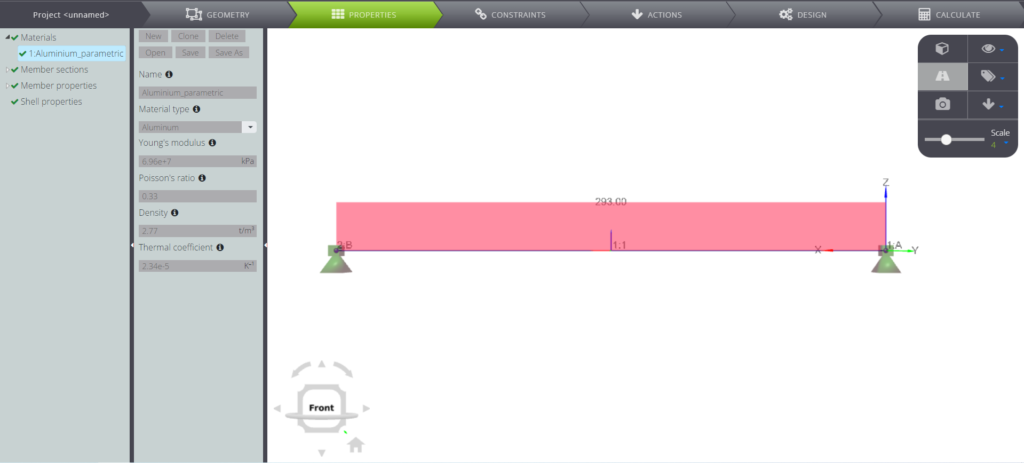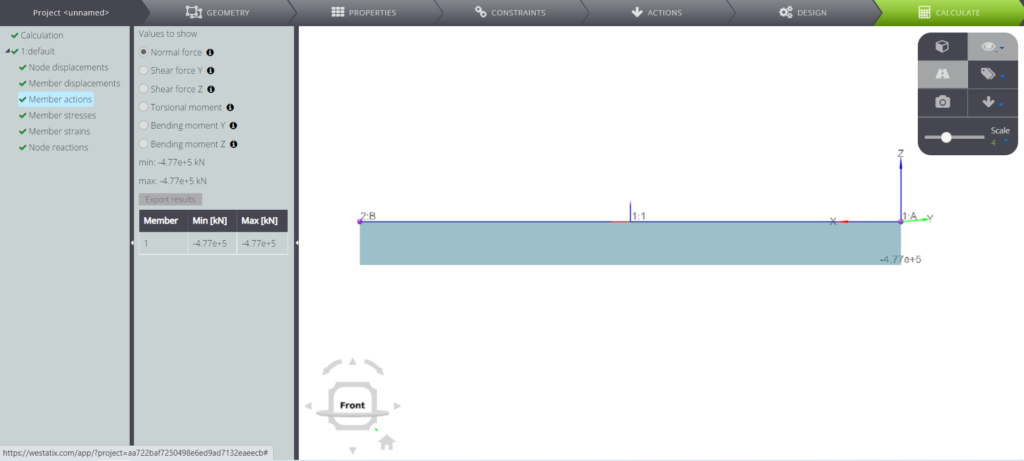In this page we consider a one-dimensional beam fixed at both ends subjected to an uniform temperature rise T.

If you want, you can build the FE model with the data shown in the following table.
| Young’s modulus | E | 69637000 | kPa |
| Section | A | 1,00 | \(m^2\) |
| Length | L | 10,00 | m |
| Coefficient of thermal expansion | \(\alpha\) | 0,0000234 | 1/K |
| Temperature increase | T | 293,00 | K |
On the other hand, you can find it through our tutorials, so you just have to start the calculation.
First you have to determine the analytical solution: in order to do it, consider the axial direction. [1] The strain on the beam due to uniform temperature change is:
\(\epsilon_T=\alpha \cdot T\)
The stress/strain law is linear, therefore the nodal forces must be
Therefore you can compare the analytical solution with WeStatiX’s results, as shown in the following table.
| Description | Parameter | UM | Analytical solution | WSX | Error | |
|---|---|---|---|---|---|---|
| Force | \(F\) | kN | 477445 | 477445 | 0,00% |
In the pictures you can see the diagram of the normal force.

WeStatiX catches the solution perfectly.
[1] DARYL L. LOGAN, A First Course in the Finite Element Method, 4th edition, Thomson
